目次
- 1 EU-US Trade Talks: 10% Tariffs and Sector Battles
- 1.1 Trump Administration’s “Reciprocal Tariffs” Policy: A Challenge to the Post-War International Economic Order
- 1.2 Additional Measures Under Section 232 of the Trade Expansion Act: Impact on Steel, Aluminum, and Automobiles
- 1.3 Detailed Analysis by Key Sectors
- 1.4 EU Response Strategy: Diplomatic Priority and Countermeasure Preparation
- 1.5 European Corporate Response Strategies: Adapting to Geopolitical Changes
- 1.6 Geopolitical Trends in 2025 and Their Impact on Businesses
- 1.7 Impact on Japanese Companies and Response Strategies
- 1.8 Geopolitical Actions and Response Strategies Companies Should Take
- 1.9 Overall Economic and Geopolitical Outlook
- 1.10 Conclusion: Responding to the New Trade Order
EU-US Trade Talks: 10% Tariffs and Sector Battles
The European Union (EU) is prepared to accept a uniform 10% tariff on most of its exports in trade negotiations with the United States. However, the EU is demanding tariff reductions in critical sectors including pharmaceuticals, alcohol, semiconductors, and commercial aircraft. Additionally, the EU continues to seek quota systems or exemptions to effectively reduce the 25% tariffs on automobiles and auto parts, as well as the 50% tariffs on steel and aluminum. This article provides a comprehensive analysis of these complex trade negotiations and their impact on various industries.
Trump Administration’s “Reciprocal Tariffs” Policy: A Challenge to the Post-War International Economic Order
On April 2, 2025, President Trump announced the introduction of “Reciprocal Tariffs.” This policy, as part of the “Make America Great Again (MAGA)” goal, aims to correct trade deficits, protect domestic industries, and address unfair trade practices.
The Two-Tier Structure of Reciprocal Tariffs
Reciprocal tariffs have the following two-tier structure:
- Base tariff: A uniform 10% on almost all imports (effective April 5, 2025)
- Additional tariff: An extra 11% to 50% surcharge on specific countries/regions with large US trade deficits
The EU was initially set to face a 20% tariff including the surcharge. However, on April 9, 2025, the US suspended the country-specific reciprocal tariff surcharges for 90 days (until July 9) for all countries and regions except China, Hong Kong, and Macau, during which only the 10% base tariff applies. This is intended to facilitate bilateral negotiations.
Notably, China has been treated differently. In response to China’s retaliatory tariffs, rates were gradually increased, with the effective additional tariff rate ultimately reaching 145%. Furthermore, the de minimis exemption for low-value imports (under $800) from China and Hong Kong was eliminated on May 2, 2025, replaced by complex alternative tariffs.
Additional Measures Under Section 232 of the Trade Expansion Act: Impact on Steel, Aluminum, and Automobiles
Steel and Aluminum: Increase from 25% to 50%
Starting March 12, 2025, a uniform 25% additional tariff was imposed on steel and aluminum products from all countries. Subsequently, from June 4, 2025, tariffs on imported steel and aluminum products from all countries except the UK were increased from 25% to 50%.
The US government aims to raise the capacity utilization rate of domestic steel and aluminum production facilities to 80% for national security reasons. These measures have affected the European steel and aluminum sectors as follows:
- Decreased exports and increased losses for EU companies
- Surge in US-bound exports of aluminum scrap, which is not subject to additional tariffs
- Damage to the domestic recycling industry
- Impact on securing secondary raw materials for achieving a circular economy
Switzerland experienced being treated as a third country under past US tariffs, with quotas quickly filled, facing 25% tariffs that made exports to the EU difficult. Steel products from Japan are subject to a tariff-rate quota (TRQ) that exempts up to 1.25 million tons annually from Section 232 tariffs.
Automobiles and Auto Parts: The Shock of 25% Tariffs
Starting April 3, 2025, the US imposed a 25% additional tariff on all imported automobiles. Similar additional tariffs on auto parts are scheduled by May 3. The US government cites national security and domestic manufacturing protection as reasons.
The impact on various countries and regions is as follows:
Germany: The US is a crucial market for Germany’s automotive industry, accounting for approximately 22% of US-bound exports (€35 billion in 2024). Companies like Porsche, which lack US production facilities, are particularly affected.
United Kingdom: The US agreed to implement a tariff-rate quota system for British cars, reducing the rate to 10% for up to 100,000 vehicles annually, with 27.5% applying to volumes exceeding this limit. However, this represents a substantial increase from the previous 2.5% tariff.
Canada and Mexico: Canada imposed 25% retaliatory tariffs on US-made automobiles, and Mexico proposed 25% tariffs on US imports. These tariffs are expected to significantly increase the prices of steel and aluminum needed for automobile and machinery manufacturing, leading to increased costs for consumers and businesses.
Japan: While Japan maintains zero tariffs on automobiles, many other countries impose high tariffs, with the US charging 25% on trucks and China 15% on finished vehicles. Japanese manufacturers have contributed to production expansion and job creation within the US, but whether they can secure rates lower than the UK remains uncertain.
Detailed Analysis by Key Sectors
1. Pharmaceuticals: The Dilemma Between Public Health and Industrial Protection
The Trump administration views excessively high pharmaceutical prices in the US compared to other countries as problematic and aims to “equalize” prices through tariffs. There is also an intention to promote domestic production reshoring.
Impact on EU/Switzerland/Japan:
- EU: Pharmaceuticals are one of the EU’s trade surplus items with the US, and countries like Ireland export particularly large amounts of pharmaceuticals to the US, raising economic concerns if tariffs are imposed. Ireland’s low corporate tax rate has attracted many US pharmaceutical companies to establish operations there, creating a structure where pharmaceuticals produced there are re-imported to the US. The Trump administration views this Irish “tax scheme” as problematic.
- Switzerland: Major pharmaceutical companies like Roche and Novartis derive a large portion of their global profits from the US, with pharmaceuticals accounting for 40% of Switzerland’s total exports, 60% of which go to the US. If 25% tariffs were imposed, Swiss pharmaceutical companies could face approximately $8.75 billion in increased costs.
- Japan: Major pharmaceutical companies have high US sales ratios (Takeda 51%, Astellas 41%, Eisai 31%, etc.), making them vulnerable to performance impacts if pharmaceutical tariffs become reality.
Industry Response and Concerns:
Pharmaceutical companies are exploring US production expansion (reshoring) and supply chain diversification. Roche has already increased US production, and other companies are advancing technology transfers. However, large-scale production facility relocation in the short term is difficult, with quality assurance and regulatory approval requiring time.
Currently, most pharmaceuticals consumed in the US have their active ingredients or critical manufacturing processes performed overseas, with generic drugs particularly tending to be produced in India or China. India’s massive generic pharmaceutical industry also imports much of its raw materials from China.
There are growing concerns that increased procurement costs due to tariffs could lead to supply stagnation, resulting in drug shortages and increased patient burdens. Pharmaceuticals are essential goods directly related to public health, and adding tariffs could lead to price increases or supply shortages, risking increased political criticism.
2. Alcohol (Wine and Spirits): The Threat of 200% Tariffs
President Trump warned that he would impose 200% tariffs on wine, champagne, and other alcoholic products from the EU in response to the EU’s plans to impose high tariffs on American whiskey.
Impact on EU Exports:
- EU alcoholic beverage exports in 2024: approximately €29.8 billion
- Largest export destination: US (€8.9 billion, about 30%)
- Wine accounts for the majority of US-bound exports
If implemented, tariffs would result in devastating losses for the EU wine industry. French champagne producers have expressed concern that the entire industry could be destroyed.
The EU announced plans to target items including wine, gin, and whiskey in initial countermeasures but has excluded some through negotiations. Alcoholic beverages including whiskey and wine were excluded from the countermeasure target list due to lobbying from member states including Ireland, Italy, and France.
3. Semiconductors: Strategic Importance and Technology Hegemony Competition
Semiconductors are a strategic industry that the US prioritizes for domestic production from national and economic security perspectives. Governments are aiming to innovate and expand their AI ecosystems, advancing autonomy in AI and de-risking related supply chains located in geopolitically adversarial countries/regions.
EU Goals:
The EU, through its “Digital Compass 2030” policy, aims to produce at least 20% of next-generation semiconductor production within the EU by 2030, seeking to catch up with the US and China.
Semiconductors and their raw materials continue to be the focus of export controls and investment incentive policies, with governments promoting domestic production. Network infrastructure security and governance are also priorities, with measures including bans on supplying materials and components to companies based in adversarial countries.
4. Commercial Aircraft: Long-standing Subsidy Disputes
The US and EU have been engaged in a long-standing trade dispute over subsidies to aircraft manufacturers (Boeing and Airbus).
Related Tariffs:
Following the WTO’s ruling that subsidies to Airbus were improper, the US imposed retaliatory measures in October 2019, adding tariffs worth $7.5 billion annually on EU imports, including 10% (later raised to 15%) on civilian aircraft. This primarily targeted aircraft from France, Germany, Spain, and the UK.
The EU also published a list of potential countermeasures but maintains a stance of seeking resolution through dialogue, stating “we do not want a tit-for-tat escalation.”
EU Response Strategy: Diplomatic Priority and Countermeasure Preparation
The EU has shown a cautious but firm stance, prepared to take countermeasures if necessary against US tariff measures.
Countermeasures and Negotiation Stance
Steel and Aluminum Countermeasures: In response to US tariffs on steel and aluminum, the EU published countermeasures worth €21 billion in its official gazette on April 14, 2025. Originally scheduled to take effect on April 15, the EU suspended application until July 14 following the US suspension of reciprocal tariffs.
Automobile and Reciprocal Tariff Countermeasures: The EU published a draft list of target items for new countermeasures against US additional tariffs on automobiles and auto parts and the uniform 10% reciprocal tariff on May 8, 2025, and conducted public consultation. According to Financial Times reporting, proposals to target IT services, where the US has strengths, have also emerged.
Prioritizing Negotiated Solutions: The EU is most concerned about escalating retaliation with the US leading to a trade war and places the highest priority on persistent negotiation for resolution. In preparation for negotiation breakdown, it has published plans for countermeasures targeting $100 billion worth of US products.
Strengthening Strategic Autonomy: The EU aims to escape excessive external dependence and strengthen economic security through concluding “Clean Trade and Investment Partnerships,” preferential treatment for European companies in critical sectors, and promoting a circular economy.
Impact on the EU Economy
GDP Downward Pressure: US tariff policies are expected to deal a significant blow to the EU economy, with the combined direct and indirect effects estimated to reduce GDP by approximately -0.7% across the EU. The impact is expected to be particularly severe in countries with high manufacturing proportions or high dependence on the US, such as Germany and Ireland.
Price Effects and Chinese Product Inflows: While tariffs push up import prices, US-bound exports from various countries may be redirected to the European market, intensifying competition and potentially putting downward pressure on EU prices.
Deteriorating Business Sentiment: Overheating trade friction with the US could negatively impact corporate sentiment and investment decisions.
European Corporate Response Strategies: Adapting to Geopolitical Changes
European companies are making multifaceted changes to their supply chain and production base strategies in response to US-China trade friction, broader geopolitical tensions, and moves to strengthen economic sovereignty by various countries.
Supply Chain Diversification and Production Base Reorganization (De-risking)
- Many governments are strengthening protectionist trade and industrial policies to preserve economic advantages and sovereignty, potentially leading companies to diversify supplier locations.
- Industrial policies encouraging or mandating domestic production in strategic sectors such as digital technology and climate-related technology are being introduced, with companies exploring related tax incentives, subsidies, and government-guaranteed investment opportunities.
- Global manufacturing companies are considering relocating business bases or changing operations to Central and Eastern Europe, evaluating talent skills and availability as criteria for alternative locations while advancing supply chain dispersion.
- Many multinational companies are expected to relocate parts of their supply chains to Southeast Asia, India, and emerging markets in Europe and Latin America. Southeast Asia has particularly become a major destination for foreign direct investment (FDI).
- Companies in mobility, space, and defense sectors, with their extensive supply chains, are prioritizing onshoring (returning home), nearshoring (relocating to neighboring countries), and friendshoring (relocating to friendly countries) for raw materials and component assembly.
Specific Corporate Response Examples
Strategic Examples in the US Market:
- Environmental Sector: Spain’s Siemens Gamesa Renewable Energy (SGRE) was designated as the preferred turbine supplier for the largest offshore wind power project in the US.
- Automotive Sector:
- Volkswagen (VW) opened a competence center for autonomous driving R&D in California and plans to start production of next-generation electric vehicles (EVs) based on the MEB platform at its Chattanooga plant in Tennessee from 2022.
- BMW invested approximately $10 million in its South Carolina plant to double its onboard battery production capacity.
- Freudenberg acquired XALT Energy, a US lithium-ion battery manufacturer.
- Healthcare: Philips partnered with UVM Health Network to provide comprehensive clinical and business solutions and consulting services.
Strategic Examples in the Chinese Market:
- Public Works:
- Alstom won contracts for subway and tram systems in China.
- Siemens signed a comprehensive strategic partnership with State Power Investment Corporation (SPIC) in Beijing.
- Chemical Industry: BASF is building an integrated production site (Verbund site) in Zhanjiang, creating an integrated value chain from basic chemicals to consumer-oriented products and solutions.
- Electric Vehicles (EVs):
- Deutsche Post DHL announced the Chinese market entry of StreetScooter, its subsidiary that develops and produces small electric commercial vehicles.
- BMW Group and Great Wall Motor (GWM) held a groundbreaking ceremony for an EV joint venture plant in Zhangjiagang, Jiangsu Province.
- ABB decided to take a majority stake in Shanghai Chargedot New Energy Technology, a Chinese charging equipment manufacturer.
- Connected Cars: BMW and Tencent signed an agreement in Beijing to build the “BMW Group China High Performance D3 Platform” data center.
Geopolitical Trends in 2025 and Their Impact on Businesses
According to EY’s report, three major themes drive geopolitical trends in 2025:
1. National Leaders’ Focus Shifts from Elections to Policy
The global election year of 2024 saw populist policy supporters and anti-establishment forces gain ground in some countries. This is expected to lead to strengthened protectionist policies, immigration restrictions, pressure on green policies, and weakening of government institutions in 2025.
2. Economic Competition and Strengthening of Economic Sovereignty by Countries
The de-risking trend that intensified in 2024 will continue in 2025, with governments expected to expand protectionist trade and industrial policies to strengthen economic sovereignty. Digital technology and climate-related technology will be the most important policy areas.
3. Intensification of Geopolitical Confrontation
As global multipolarity advances, multiple standards and systems applicable to cross-border business will be developed and compete, leading to increased complexity in the global economy.
Top 10 Geopolitical Trends Expected in 2025
- Impact of Populist Policies: Widening economic disparities, threat perception of immigration issues, and national identity issues are accelerating populist appeals.
- Taxation Challenges: With heavy debt burdens and fiscal deficits increasing in many countries, tax increases on the wealthy and corporations, closing tax loopholes, and improving tax collection efficiency are likely.
- Divisions Seen Through Demographics: While immigrant-receiving countries attract talent with specific expertise, immigration restrictions may become a populist priority.
- De-risking and Dependencies: Protectionist trade and industrial policies will be priorities for populist governments, with the US expected to lead implementation.
- Digital Sovereignty: Governments aim to innovate and expand AI ecosystems, advancing AI autonomy and de-risking related supply chains.
- Climate Policy and Competition: Climate policies may face pressure from ideologies opposing environmentalism and economic concerns about short-term household burdens.
- New Dynamics in Geopolitical Energy: Governments will make various trade-offs in energy policy based on their ideologies, resource availability, and geopolitical cooperation.
- Emerging Market Integration: Economic security policies of major countries will be the main drivers of investment plans in emerging markets.
- War and Conflict: War in Ukraine is likely to continue on both physical and cyber fronts, while cycles of violence in the Middle East are likely to persist.
- Space Politics and Space Economy: Competition for space resources is expected to bring new investment and growth opportunities for mining companies.
Impact on Japanese Companies and Response Strategies
In negotiations with Japan, the outlook for eliminating the 10% base rate is not optimistic, and the surcharge rate (14%) may be reduced depending on Japanese concessions. The Japanese government has expressed concerns about consistency with trade agreements and seeks revisions while avoiding retaliatory “tit-for-tat” responses.
Impact on the Pharmaceutical Industry
Major Japanese pharmaceutical companies (Takeda, Astellas, Daiichi Sankyo, Chugai, etc.) have high US sales ratios, and if pharmaceutical tariffs become reality, the impact on performance would be unavoidable. Fortunately, under the Trump administration, pharmaceuticals remained a tariff “sanctuary” and were excluded until the end, avoiding massive tariff payments.
However, companies have strengthened risk management through supply chain redundancy (expanding US manufacturing facilities, securing production systems in multiple regions) and inventory strategy reviews. For example:
- Astellas Pharma: Building a new gene therapy drug factory in North Carolina, USA
- Chugai Pharmaceutical: Partnering with Roche, remaining vigilant about potentially shifting some manufacturing to the US if necessary
Response in the Steel Industry
For Japanese steel products, the US introduced a tariff-rate quota (TRQ) from April 1. This measure, similar to the agreement with the EU, exempts up to 1.25 million tons annually from Section 232 tariffs. The US emphasizes this promotes allied cooperation against China’s unfair trade practices.
Economic Security and Decoupling
The US is requesting allies to strengthen cooperation on economic security, including responses to “non-market policies” by third countries (particularly China). Specific areas of cooperation include:
- Export controls
- Investment security measures
- ICT vendor security assurance
- Intellectual property protection
- Labor issues including responses to forced labor
- Environment
- Government procurement
- Customs cooperation to prevent circumvention imports
Japan may face difficult choices if asked to ensure supply chain security (e.g., partial exclusion of Chinese capital or products) in exchange for improved US market access. Refusing could make tariff reductions difficult, while accepting risks Chinese retaliation and economic bloc formation.
Geopolitical Actions and Response Strategies Companies Should Take
Executives need to strengthen resilience against future uncertainties and shape and maintain strategies while actively engaging with stakeholders.
1. Exercise Strategic Insight and Strengthen Resilience Against Future Uncertainties
- Utilize strategic foresight methods such as scenario analysis and tabletop exercises to systematically manage uncertainty and increase confidence in strategic decision-making
- Re-evaluate digital and technology-related supply chains and respond to onshoring, nearshoring, and friendshoring trends
- Evaluate investment opportunities related to digital sovereignty and focus on industrial policies that encourage or mandate AI algorithm, semiconductor, and network infrastructure R&D and manufacturing
- Examine how inconsistent climate policies might affect cross-border business interoperability and sustainability strategies
- Recognize the impact of energy transition on corporate strategy and compliance, and consider renewable energy availability and attractiveness in investment decisions
- Analyze emerging markets that offer the greatest business opportunities and consider optimal scenarios for market entry, expansion, or exit
2. Shape and Maintain Strategies While Actively Engaging with Stakeholders
- Develop communication strategies to address sensitive political issues internally and externally, mitigating business and reputational risks arising from geopolitical trends
- Collaborate with trade and industry associations, investors, and other stakeholders to clarify the impact of potential tax reforms while supporting governments in forming efficient tax policies
- Appeal to governments about the economic rationale for immigration and support the establishment of flexible labor mobility frameworks that lead to talent acquisition and retention
- Reflect government debt fluctuations in financial planning and develop scenario-based plans and contingency plans
- Utilize domestic production incentives and government-guaranteed investment opportunities in strategic sectors
- Prioritize transparency while advancing supply chain diversification, considering the possibility of being unable to mitigate geopolitical risks
- Re-evaluate global trading strategies and funding relationships across supply chains in response to rapidly increasing trade restrictions and tariffs
- Determine the feasibility of relocating business sites or changing operations to strengthen resilience against future conflict scenarios
- Invest in cyber resilience and assess cybersecurity risks across the value chain
- Understand and assess sanctions risks and compliance
Overall Economic and Geopolitical Outlook
Instability and Uncertainty: Intense wars and conflicts, economic relationship uncertainties, and disruptive factors (generative AI evolution, demographic changes, climate change) will be the main elements shaping the global economy and geopolitical situation in 2025. Corporate supply chains are becoming increasingly complex, making preparation for uncertainty crucial.
Decoupling and Economic Bloc Formation: Governments are strategically merging national security and economic objectives, accelerating moves to expand domestic production of critical materials. Economic flows are being divided by geopolitical boundaries or rerouted through “connector countries.” This intensifies competition and tension between international economic blocs and allied networks, potentially increasing technology costs for energy transition and slowing adoption.
Dysfunction of Multilateral Institutions: With the WTO dispute settlement mechanism paralyzed, US additional tariff measures are unlikely to be deterred even if they violate international law.
Labor Force and Immigration Issues: While many countries face aging populations and declining working-age populations, emerging countries lack employment opportunities for youth, increasing risks of social unrest, political instability, and cross-border migration. While accepting immigrants could help resolve labor shortages, it becomes a divisive political issue in receiving countries.
Fiscal Burden: As fiscal burdens from healthcare and pensions increase due to aging populations, measures such as pension benefit reductions and tax increases may be introduced, potentially increasing social unrest.
Overall Impact on the Global Economy: Major international organizations including the IMF, WTO, and OECD warn that US tariff measures will lead to downward revisions of global economic growth forecasts, increased inflationary pressures, and heightened recession risks. Financial markets have been significantly disrupted, with policy unpredictability weighing on corporate activities and investment decisions. Many analyses suggest US tariff measures will have significant negative impacts on the US economy itself, raising concerns about divergence between policy intentions and results.
Conclusion: Responding to the New Trade Order
The EU aims to extract concessions to protect its key industries in exchange for accepting uniform tariffs in trade negotiations with the US. However, the US’s hardline negotiating stance and overall global economic uncertainty make this path difficult.
For companies, this historic transition requires properly assessing geopolitical risks and implementing multifaceted responses including supply chain diversification, localization promotion, and strengthening strategic alliances. Simultaneously, balancing flexibility to respond to rapidly changing policy environments with strategic perspective to maintain long-term competitiveness will be key to future corporate management.
The results of trade negotiations will not simply be a matter of tariff rates but will significantly impact the formation of the 21st century international economic order. How governments, businesses, and civil society adapt to this new environment will determine the direction of the future global economy.
Related Articles:
External References:
- World Economic Review Impact
- Geoeconomics Institute
- CNBC – Trade War Analysis
- Siemens Press Release
- BMW Group Press
- ABB News
- LVMH Press Release




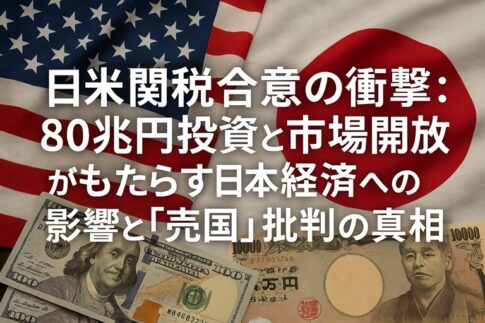
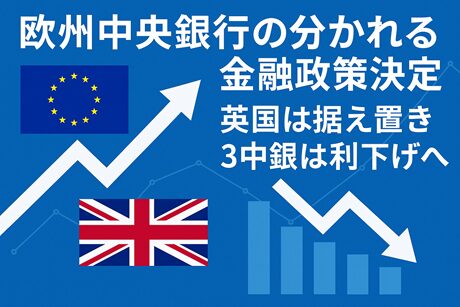
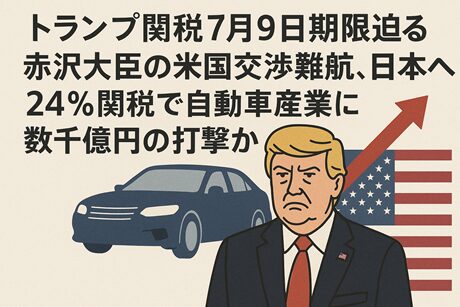
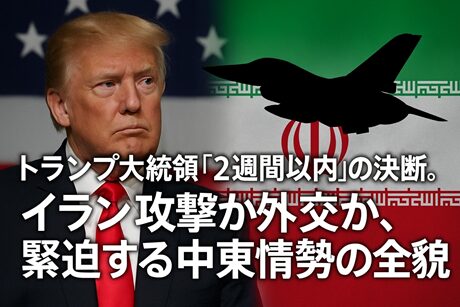

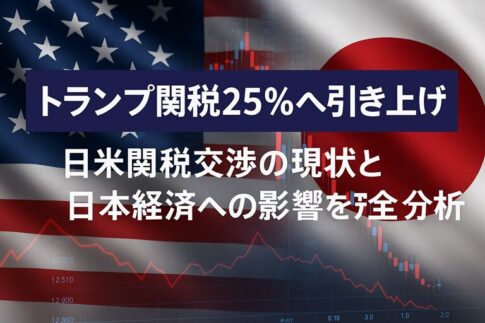
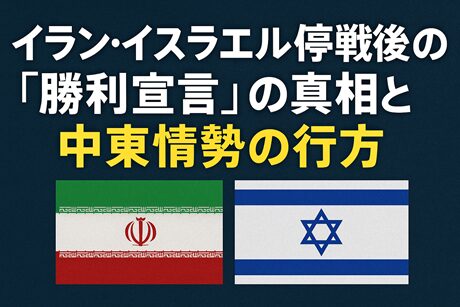

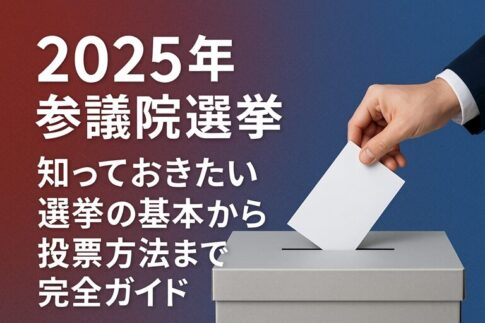




Leave a Reply